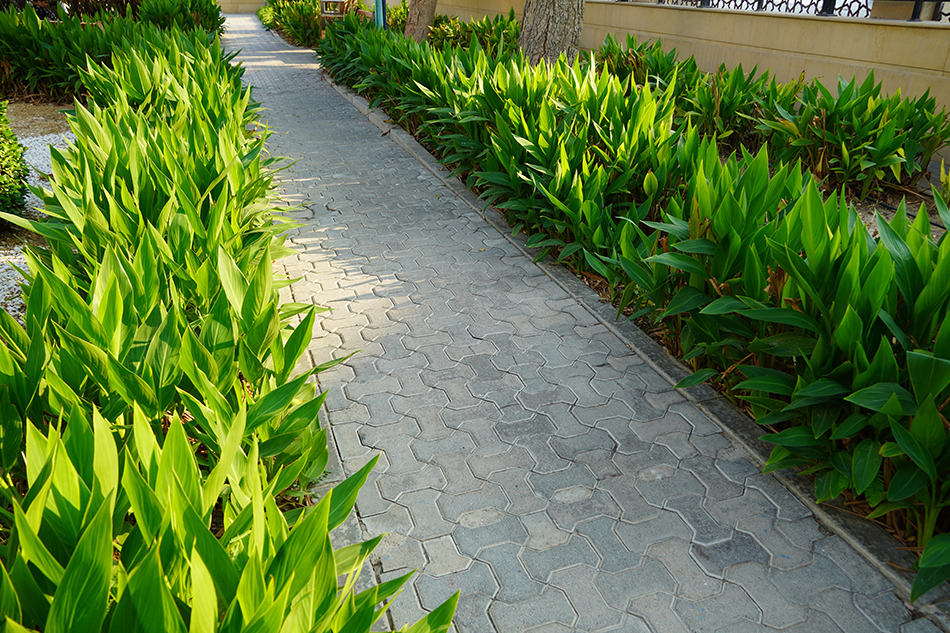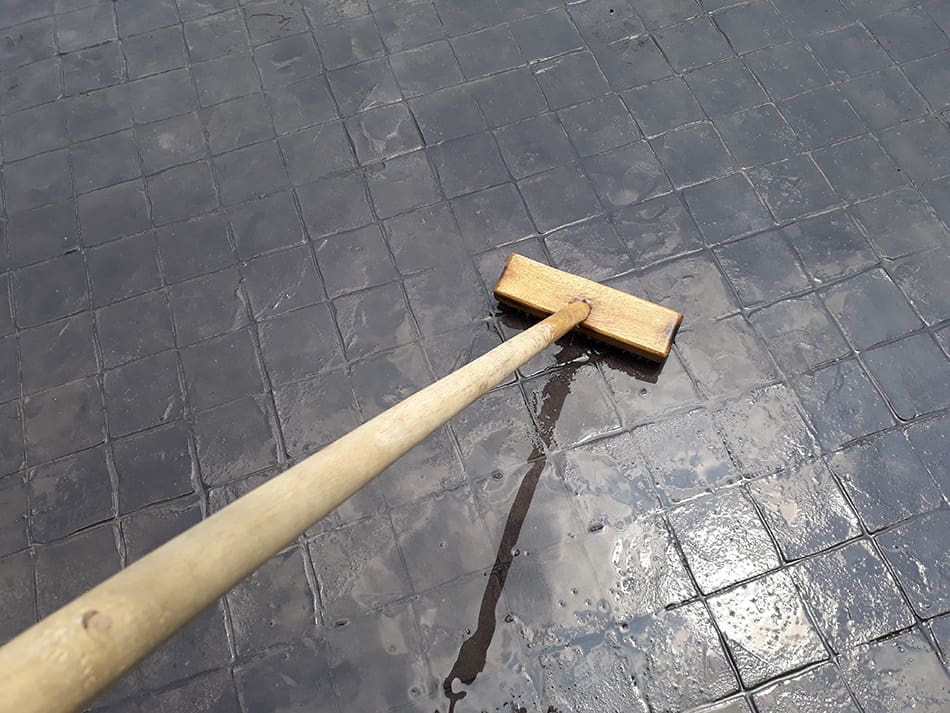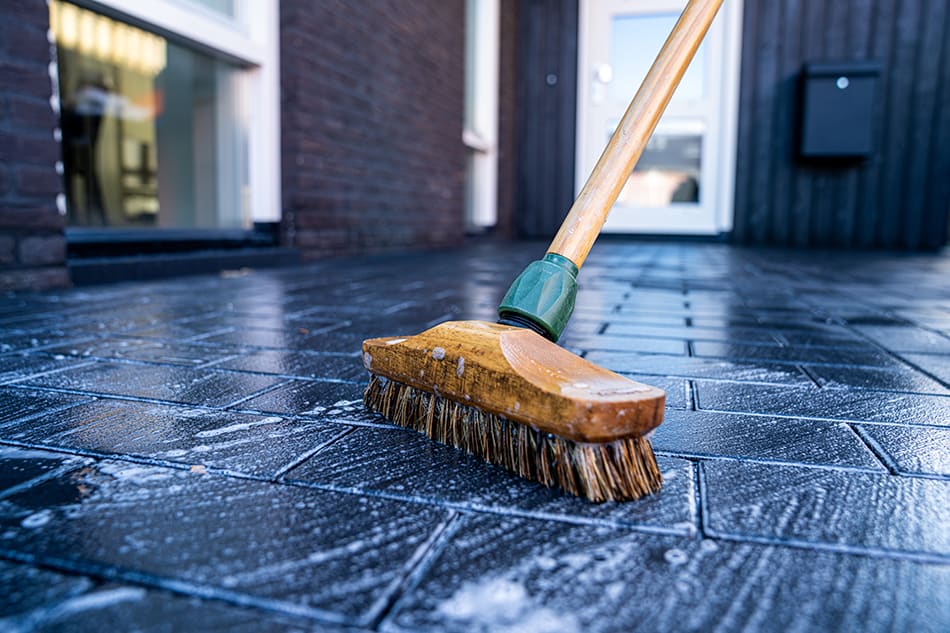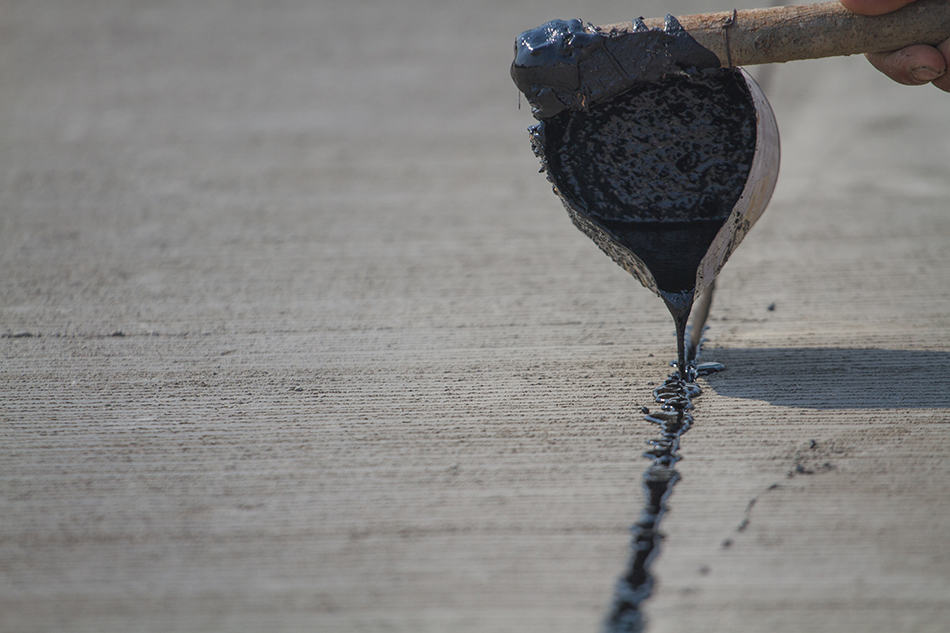The answer is yes! Concrete does absorb water; in fact, concrete moisture is one of the toughest issues faced by today’s flooring contractors.
One has to take some extreme waterproofing measures if you want to impede water transmission on concrete. When there’s high relative humidity (RF) in the air, concrete begins to absorb moisture from the air. However, when there’s low Relative Humidity (RF), the water previously absorbed will begin to evaporate from the concrete back into the atmosphere.
Concrete absorbs water because of how it’s made. The process of making concrete involves mixing different quantities of cement, gravel, sand, and water. Even when the mixture hardens, it remains as porous as a sponge.
Concrete can have varying levels of hardness depending on the combination of ingredients used to mix it. However, no matter how hard, smooth, and flat they appear to the naked eye, they would always have hundreds of thousands of pores running through them. These pores are created when the concrete is being mixed and during the curing process.
Some of these pores run deep down to the center of the concrete, while others are just on the surface. Either way, thanks to all these pores, concrete can hold and absorb moisture.
How Is Concrete Cured?
It’s been said that the way concrete is cured helps it absorb water, so how is concrete cured? Concrete remains in a semi-solid state after it is mixed and poured; it usually takes about twenty-eight days for it to harden and attain its real strength. This process of hardening is what’s known as curing.
The water used in making the concrete mixture evaporates from the mixture, leaving bubbles during the process of curing. These bubbles leave several air pockets and small tunnels in the concrete. Thanks to all these voids, concrete develops a structure that’s porous enough to absorb water.
What Does Water-damage Do to Concrete?
Ever had water damage on a concrete floor and wondered how you could dry them as quickly as possible? Well, you are not alone. Every year, thousands of landlords find water damage on a concrete floor or wall in some part of their home, garages, basements, or crawl spaces, and they have to figure out ways to get their floors dried fast enough to prevent long-term damage.
Furthermore, if you want to apply any type of flooring or finishing to concrete, then you must allow it to dry thoroughly before you begin flooring, else the floor would develop serious structural issues in the future.
Different people have different approaches to drying their concrete. A few just leave it alone and assume it’s dried once the surface looks dry; however, this may not always be the case because concrete is made of much denser material and may take a longer time to dry properly. If concrete is not properly dried for a long time, it could become vulnerable to more damage and other long-term problems.
To prevent these types of long-lasting damages, there are a few things you need to know to keep your concrete dry when it’s experienced water damage.
Water damage could be in the form of a flood, either from a natural disaster or from broken pipes, or water damage from snowmelts, plumbing problems, and moisture build-up in hardly-used areas like basements and crawl spaces and faulty appliances in the home.
It’s sometimes unavoidable to have wet concrete floors in and around your home but allowing it to stay soaked long enough to create cracks is not an option.
How to Fix a Concrete Floor Damaged by Water
Instead of ignoring water damage, take these three steps to dry the wet concrete in your home:
1. Mop up the Water on the Concrete Floor
If there’s a large amount of water on the ground, you might have to use equipment such as a sump pump to suck up the water. However, if you are experiencing a minor leak, you could simply use a mop or some dry towels to soak all the water up and dry up the surface.
2. Use a Dehumidifier
Try to install a dehumidifier in the area with wet concrete. Dehumidifiers help to pull out moisture from wet surfaces, keeping the space airy and dry. This is a popular method of getting the dampness off concrete walls. If you’re trying to use water-based adhesives on concrete walls, they won’t bond if the concrete isn’t totally dry. This means it would be extremely hard to fix water leaks until your concrete is dry.
3. Hire Professionals
If you think the damage caused by the water on your concrete floor and walls is too much for your handle, a great alternative is to hire a professional restoration company. Concrete is a major part of your home’s foundation, so if you let them stay wet for too long, that may compromise the structural integrity of your home. Concrete could be weakened or swollen if not dried the right way.
Is Water Good for Concrete?
There’s no yes or no answer to this question. Water could be good or bad for concrete, depending on the situation. On the one hand, water is essential when you’re making concrete.
The moisture from the water gives concrete strength to concrete during the process of curing. So concrete can essentially not be made without water. On the other hand, as important as water is, to the production of concrete, too much of it can be destructive. This is the reason builders often use concrete drying solutions to remove excess moisture from the concrete and ensure its strength and safety.
When climate control and good air circulation are absent, excessive moisture in concrete can create huge problems. When good conditions are absent, you should look for temperature and humidity control solutions that would help your concrete cure and dry properly with or without sunny weather.
When water is trapped in concrete, it often creates an environment for microbial growth. To keep your concrete strong and stable, avoid leaks, poor ventilation, excessive water in the concrete mix, poor drainage, groundwater, insufficient landscaping grade, and not allowing concrete cure before use.
How to Seal Concrete
If you are worried that your concrete floors may be in danger of water damage, there’s a simple way to make sure it never happens, and that’s by sealing the floors.
Sealing is extremely important in water-prone areas of the house because constant water can slowly damage the structural integrity of your home and also permit the growth of mildew and mold. Wet concrete can also cause cracks which allow insects and other unwanted elements to crawl into your space.
To maintain the foundational integrity of your home and indoor air quality in your home, seal your concrete the right way by taking the following steps.
1. Select a Good Concrete Sealant
There are many kinds of sealants available in stores, so make sure you take your time to pick out a sealant that’s best suited for your project. The types of sealants you’ll find include acrylic sealers.
These kinds of sealers are best used on floors that do not experience oil or grease spillage, such as basement floors or other concrete floors inside the house. They are very easy to apply, and they protect the surface of your concrete but don’t seep into the concrete to protect the insides.
You’ll also find epoxy sealers in stores. These are a little more durable than the acrylic ones. One advantage they have over acrylic sealants is that they can protect your floors from not just water but also grease and oil, so you can use them in your garage, shed, or other parts of the house that may experience occasional oil spillage. You’ll find epoxy sealants in a variety of colors. Thirdly, you can also find polyurethane sealants.
These sealants are a lot more durable than epoxy and acrylic sealants. They offer all the benefits provided by epoxy and acrylic sealers and also offer protection from ultraviolet rays.
In indoor concrete surfaces, polyurethane sealants are most times used as an overcoat for epoxy sealers. Finally, there are siloxane sealers which are currently the most lasting sealers in the market. They are able to protect your concrete for up to two decades. These sealants penetrate the insides of concrete and can be used everywhere, from patios to driveways and garages.
2. Clean up the Concrete Surface
After picking out the appropriate sealant, the next step would be to remove dirt from the concrete surface. Do this by cleaning the floors or walls in question thoroughly.
You can use a concrete cleaner alongside a brush or broom. Whatever you use, always rinse off the cleaner before applying a sealant, and make sure your surface is thoroughly dry before applying your sealant. It is usually advised to leave at least 24 hours for drying before applying a sealant.
3. Check for Cracks and Fill Them
Look for any holes and cracks on your concrete and fill them up with some concrete repair caulk prior to the application of your sealant. Give the caulk some time to dry before proceeding with the next step.
4. Apply the Sealant
Before applying the sealant indoors, make sure your doors and windows are open and the room is properly ventilated. You have to apply a double coat of sealant to ensure that your concrete is protected.










